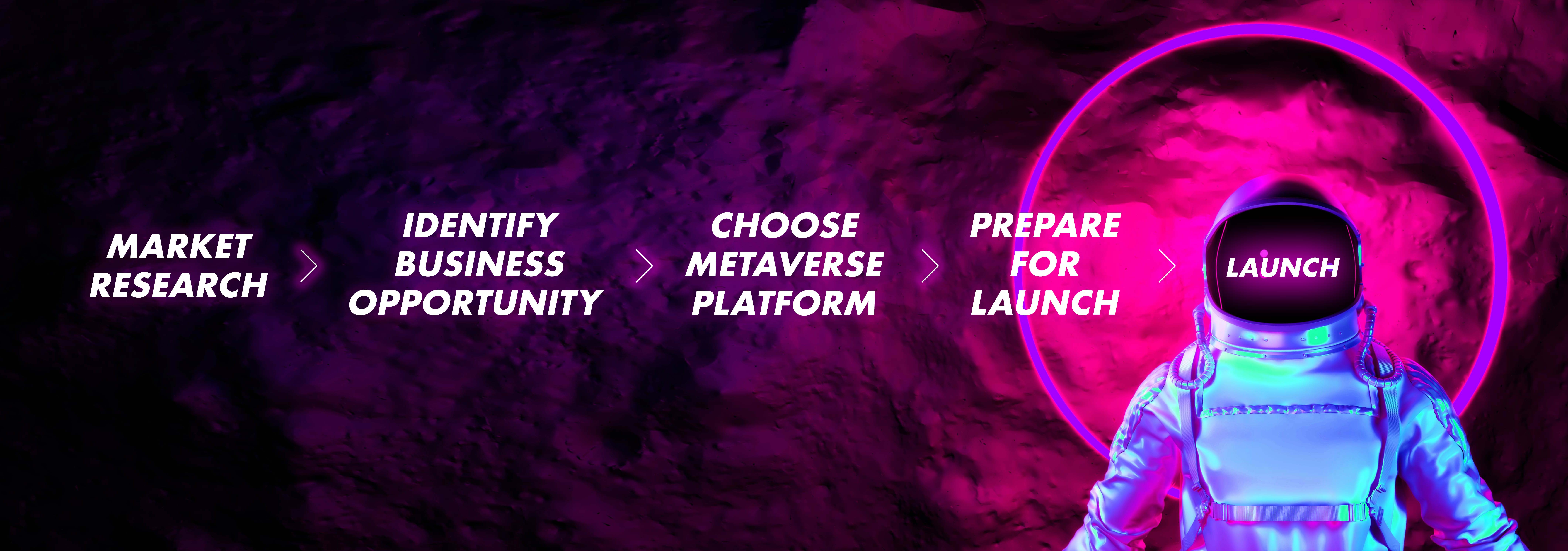The Physical and Digital World Are Merging
For many years, the way we discovered, purchased and/or consumed goods and services was through some sort of physical interaction by either visiting a store, attending events or booking services. When the Internet came around, e-commerce platforms started to pop up and rivaled the offline world. Shopping digitally meant browsing a website and seeing a 2D interface with product listings, information and prices.
Covid naturally changed multiple elements of our world. Physical stores closed, e-commerce platforms became the sole portal to purchase products and get them delivered. Our social engagement was restricted to telecommunication and social media platforms.
COVID also changed the way we work. We had to switch to remote work drastically changing how companies operate. From one day to the next, everyone was on a Zoom call or in a Teams meeting. We didn’t have that office experience and open space to interact anymore. The entire entertainment industry came to a stand-still. Concert tours, sports tournaments and more were cancelled. And even the manufacturing industry was affected with plants shut down and workers worldwide being laid off.
What does that all have to do with the metaverse and NFTs? A lot, because how the world has changed, not only through the worldwide pandemic, points us to alternative solutions to keep our daily life running without cutting down or making compromises. It points us in a direction to explore how we can leverage digital assets in our economy, so that in extreme situations like a pandemic the world does not come to a stand-still suddenly and everyone has to cut down on meeting friends, going to concerts, going shopping and more.
The metaverse is a vision of the future. A vision companies are actively building by exploring extended reality experiences. A land of opportunities for consumers to interact with businesses and brands and vice versa. An environment that will transform entire industries.
NFTs could be the fuel of a decentralized metaverse. NFTs are at the core of web3. Powered by blockchain technology, they enable everyone to own a piece of the Internet unlike in web2 and more centralized metaverse experiences such as Fortnite/Minecraft/Roblox, extend a consumer’s identity and unlock experiences beyond our current imagination.
The metaverse is upon us, and we are helping our clients’ brands navigate this new space as a natural extension of their omnichannel presence. While the first wave of adaption has been mostly FMCG and Luxury brands incorporating a Direct-to-Avatar or NFT strategy, we see the next wave of adoption taking place within B2B brands through what we call “The Corporate Metaverse.”
The Corporate Metaverse refers to closed, and self-owned metaverses that are built to support the company’s internal and/or external operations. This could be virtual production setups, cross office collaboration spaces, supporting the salesforce in landing deals or any other virtual experience that supports the B2B brand’s growth.
“Imagine multiple manufacturing plants with multiple specialists needed to oversee a production process and interact with each other. We can simplify this process by utilizing technology to build new ways of working through virtual environments in which one or several employees can oversee multiple plants at the same time across the globe.”
- Robert Holm Thomsen
The metaverse platforms of the future are set to transform how businesses interact with consumers and how they conduct business. Let’s explore together what the metaverse is and what NFTs are before we dive into how to enter the metaverse.
Entering the Metaverse is Projected as a Multi-Trillion Dollar Opportunity
Defining the metaverse and understanding its history is instrumental in grasping the value proposition and what a world beyond our physical presence can do for you as a business or brand.
The metaverse aspires to be a destination where people come together and interact. It is not destined to be a replication of our existing world, but rather an extension. Brands can connect with consumers through immersive extended reality (XR) experiences.
The experience envisioned in the metaverse ranges from shopping for goods and services for your avatar, to attending concerts, buying virtual land, using it as a work hub and much more. The entire range of what will be possible is yet to be seen while the companies building different platforms explore the adoption process. The underlying technology promises to offer businesses a whole new sphere of user interaction and targeting opportunities.
At the beginning of 2022, JP Morgan predicted that the metaverse business is a $1 trillion dollar opportunity. JP Morgan Chase is not a stranger to the metaverse as they opened a lounge in the Metajaku Mall in Decentraland.
Citi, the investment bank, has even stated that it sees the metaverse as a potential $8 trillion to $13 trillion opportunity by 2030, boasting as many as 5 billion users.
Currently, the market is nowhere near this evaluation. Two of the biggest decentralized metaverses currently in existence, Decentraland and The Sandbox, have a combined market cap of “only” a few billion dollars. The trillion dollar evaluation is over a 1000x increase from here. This demonstrates the potential future upside.

What Are NFTs?
NFT transactions jumped from $82.5 million in 2020 to a staggering $17.6 billion in 2021. That’s a 21,000% increase in just a year. Popular Art NFT collections include the Cryptopunks and the Bored Ape Yacht Club. These are so-called PFP (profile picture projects) popular among retail investors in the space, which have sold for hundreds of thousands of Dollars. The Bored Ape Yacht Club has become a serious brand. They are actively working on their Otherside metaverse, have organized big events such as the Apefest in New York and can call celebrities such Stephen Curry, Madonna, Jimmy Fallon and more among their holders.
Art NFTs are destined to be the gateway drug for Gen Z to enter the space. A whole new generation of tech-savvy, digitally native consumers is forming before our eyes.
In its simplest form, an NFT can be an image, a video, an audio file or any form of digital information. NFTs are minted (created) on the blockchain using so called smart contracts. The blockchain, a digitally distributed, decentralized, public ledger which exists across a network, records every single NFT transaction.
If you, as the owner of an NFT, would like to sell it and someone is willing to buy your NFT, a smart contract is executed. The smart contract will record information about the sale and certify the transfer of ownership from the seller to the buyer. Websites such as etherscan.io allow you to publicly scan all transactions ever recorded on the Ethereum blockchain. It is impossible to alter made transactions since blockchains are running on nodes (computers), which spread, store and preserve transaction information.
NFTs are usually bought on marketplaces such as OpenSea, Rarible and Foundation, so-called decentralized applications, with the native token of the blockchain they were minted on. The most popular blockchain is Ethereum with the digital currency “Ether” used on the network. Other blockchains include Solana, Terra Luna, Cardano, Avalanche and more.
NFT Use Cases In and Out of the Metaverse
The “right click and save” criticism for NFT Art is very comparable to you owning a replica of the Mona Lisa without any rights attached to it. The original Mona Lisa could be tokenized on the blockchain as an NFT and be your property including intellectual property rights governed by the NFT contract. The proof of ownership makes the difference.
Beyond the art spectrum, NFTs could prove to be a groundbreaking piece of technology. By utilizing NFT technology, various use cases in automotive, ticketing, music, public services and more can be established.
Some popular use cases include:
- Automotive – NFTs are scarce assets thanks to the smart contract technology behind the minting process. Future use cases in the automotive space include using NFTs for collecting vehicle data. It is impossible to alter this data afterwards, once it’s validated on the blockchain it’ll stay there forever.
- Public Services - You can potentially use NFTs as storage for identity (name, biometric, social security, driver license, etc.) information without needing a paper document. All you need is a digital (software or hardware) wallet to store the NFT. Since NFTs are transferable, the industry is momentarily discussing how to make them non-transferable in order to securely protect an identity (e.g. Soulbound Tokens). Other use cases include regulation for pharmaceuticals, aviation parts, medical equipment, administration including sovereign wealth-fund and pension administration and a voting system based on the blockchain.
- Music – Rights management, licensing, royalties and more. A wide field of use cases can emerge by utilizing music in the NFT space and subsequently using the technology to track a song through the entire value chain. You can sell a music NFT via a marketplace (OpenSea, Enter.audio and more), or you can develop a music streaming service such as Audius and embed NFT technology for users to interact with artists. in five days, an unreleased track by Whitney Houston sold for as an NFT, Timbaland released a music track performed by an NFT band (Bored Apes). Just a few examples that show the potential of NFTs in the music space.
- Ticketing – An exciting use case for entertainment in the metaverse but also in the real world. Events in the metaverse will be tremendously popular in the future, selected artists including Snoop Dogg, Justin Bieber and Deadmau5 already are invested in the metaverse space and have given performances in one of the many virtual worlds. The traditional way of purchasing concert tickets and getting entry through paper tickets will be challenged by the possibility of issuing actual tickets for concerts with proof of ownership of those tickets on the blockchain. The real benefit is that it allows event organizers to keep track of the tickets with all transactions being documented on the blockchain and potentially preventing scalping, price gouging or any behavior that can be classified as fraud. At the same time, they will be able to regulate the secondary market and receive a resale fee directly, which will prove to be a lucrative revenue opportunity while also potentially cutting out predatory ticket resale platforms.
Your Metaverse Go-To-Market Strategy
According to influencermarketinghub.com, the metaverse may be worth $800 billion in 2024, up from $47 billion in 2020. That’s a growth potential of over 1000% in just four years. If you do not know where to start, this Step-by-Step Guide may help you find inspiration on how to enter the metaverse and be a part of the future.

Be Active in the Metaverse Space and Research
Microsoft, Meta, Roblox, Spatial, Decentraland, The Sandbox, Wilder World, Highstreet are just some of the companies actively building the future.
For you as a brand, examining the space and various opportunities will not only be about reflecting on what is being built by others, how technology advances or what mediums are being used to enter the space, but critically assessing your business and products. Solving actual issues that your consumers have has to be at the forefront to determine if the metaverse and blockchain technology is a fit or not. Entering the space without a clear value proposition should not be the goal.
The technology used to build each layer is set to drastically improve over the next few years, and we are currently only seeing the beginning. From infrastructure including chips and processors (Nvidea, Intel), 5G and latency networks, cloud infrastructure (AWS, Google Cloud) to virtualization tools such as Unity and Unreal Engine to access and interface hardware including VR headsets (Occulus), AR Smart glasses (Google, Nreal, Apple) and Holographics.
The global VR, AR and MR market will roughly reach $300 billion by 2024. The vision of a fully immersive metaverse experience is still very early days, so is the equipment needed to explore virtual worlds. The big and bulky VR headsets including the Occulus 2 by Meta will not be the last innovation in the space, they are just the start. Nreal and Google are working on AR glasses resembling a pair of sunglasses and they look to lower the entry barrier for many into the metaverses of the future. Equipment, which is slim and easy to put on will deliver a seamless mixed reality experience wherever you go.
NFTs will be a crucial part of the experience inside the metaverse including their interoperability across multiple platforms. That means consumers can take them from one metaverse to the next with blockchain technology including cross-chain bridges and wallet infrastructure allowing this. It is hard to predict, which virtual worlds and aspiring metaverses will successfully cement their way into the heart of consumers and leave a lasting impression. But the interoperability functionality that NFTs will increasingly have make an investment for businesses and brands less risk-heavy.
Meta, formerly Facebook, is actively working on the metaverse and has recently announced they would integrate NFTs on their social media platforms. The development of Horizon Workrooms, enjoyed by VR headsets, is bolstered by big investments. Meta will create 10,000 jobs in the EU over the next five years.
Metaverse Use Cases: Identifying Business Opportunities
After your initial research of the web3 space, you can use your newly gained insights to reflect on your business model and identify potential opportunities. Critically assess, brainstorm and potentially even prototype solutions that will fit your brand positioning.
Immersive Commerce with NFTs
The metaverse is the perfect place to create new income streams, increase the brands reach beyond the physical retail store and create even better digital profiles of consumers to leverage channels for retargeting.
A Direct-2-Avatar purchase process will become more popular in the future, which web3 researcher Robert Holm Thomsen from Valtech also stresses. This means that digital products are sold and used only in the digital world. NFTs are the crucial piece of technology to make this experience within the metaverse a reality.
If you decide to use NFTs to create digital experiences, put emphasis on value creation and offer unique utilities that make it worthwhile to invest in your brand or business. Focus on what your consumers like about your brand and use how they connect with you to your advantage. Creating actual benefits for holders of your NFTs is key.
Community-building is a very important aspect in this regard as well. Building momentum through compelling storytelling and a proper preparation for your launch will set you up for success. Take Adidas, for example. They recently launched their Meta “Capsule Collection,” teasing a metaverse move. The NFTs display capsules with the content still to be revealed.
Advertising in the Metaverse
A shift in how advertising and marketing is created is fast approaching.
Companies such as LandVault (formerly Admix) make it easy for you to book ad spaces facilitating NFT technology on gaming and metaverse platforms to position your brand in front of an audience. Consumers usually see these ads without their in-game experience being interrupted compared to traditional in-game ad mechanisms currently in place.
The consumer, in this case the avatar, is seamlessly exposed to your brand, the effect is comparable to window-shopping on a crowded highstreet.
Connecting With Audiences Through Entertainment and Events
Metaverse communities love to gather, build and explore. Organizing concerts, events, digital marketplaces and more to position your brand looks to attract crowds. Justin Bieber held a meta-universe concert on the virtual music platform Wave in 2021 with a total of 10.7 million people attending, and Disney is set to build a metaverse theme park. The entertainment and event sector within the metaverse is one to watch.
In the centralized metaverse world Fortnite, Travis Scott put on a show in 2020 and generated 45.8 million views. He also made $20 million including merchandise sales from it.
Understanding Centralized vs Decentralized Worlds
If you are serious about taking your business to the metaverse, it is important to choose the platform where your target audience is. In the real-world, big corporations do extensive research and gather data about demographics, geographics and purchase behavior. This is to make sure that when they open a store, that store is perfectly positioned to draw the right crowd. This can be applied to metaverse platforms as well. Let’s take a look at some Pro’s and Con’s for centralized vs. decentralized platforms.
Centralized Worlds
A centralized platform is a world developed by a company not utilizing the possibilities of blockchain technology. Good examples are Fortnite, Minecraft and Roblox. Meta, formerly Facebook, is actively developing their Horizon workrooms platform as well for a virtual office experience.
Pros
+ Good opportunities for brands to market their products and get in front of a large audience
+ Proven-track record of bringing in large amount of communities.
Cons
- Brands cannot enable users to own digital items (NFTs)
- Centralised platforms have communities but not entire ecosystems (Ethereum) that can support them and onboard users, developers and more.
- It is more difficult to build integrations to bring other services or goods onto the platform
Decentralized Worlds
A decentralized platform on the other hand is built on blockchain technology and can utilize the ownership structure of digital items in the form of NFTs. Centralized platforms also use in-game assets you can buy, though they only exist in this particular open world and not beyond.
Decentraland, The Sandbox and Highstreet are among the more known decentralized metaverse platforms on the market.
Pros
+ You can use NFTs to build brand experiences and enhance the digital identity of consumers
+ NFT Interoperability: Wallets allow for NFTs to travel in the future from one metaverse to the next
+ Untapped opportunities for loyalty programs thanks to tokenization
Cons
- Regulation is still early days to protect consumers from exploits, hacks etc.
- Higher entry barrier for audience due to UX constraints (create wallet, buy blockchain native token to buy an NFT etc.)
- Not a huge amount of daily and monthly active users compared to centralized worlds yet
Find the Right Metaverse Platform for Your Audience
Roblox – A hub for content creators and artists (Centralized World)

Roblox is a gaming platform allowing for game-creation. Roblox has established their own economy within fueled by their in-game currency Robux. It is a hub for artists showcasing their work, but it’s also a popular space for concert experiences (Lil Nas X, Twenty One Pilots).
There are a wide variety of different events including listening parties, virtual panel discussions and virtual workshops taking place allowing businesses to link up with creators to position their brand in front of a very specific and chosen audience.
Metaverse Strategic Fit:
If your target audience is interested in music, gaming, movies or art, Roblox may be for you.
The Sandbox and Decentraland – Home of entertainment, games and concerts (Decentralized World)

The Sandbox is an Ethereum-based metaverse and gaming ecosystem focused on enabling users to create, share and monetize in-world assets as well as gaming experiences. It has momentum with influencers such as Snoop Dogg and Paris Hilton and businesses and brands including Samsung, Adidas, Gucci, Atari and Warner Music.
There are various placement opportunities to offer digital items, but unlike HighStreet, which is focused on commerce, The Sandbox takes it one step further and integrates entertainment experiences driven by the creativity of their players.

Decentraland, also built on Ethereum, initially launched in 2017 as a 2D enterprise and has since evolved into a fully immersive and entertaining 3D metaverse.
Decentraland focuses on users buying land plots, just like in the Sandbox, and actively participating to build out the experience within. You can enjoy a wide range of activities including games, casinos, galleries, concerts and more.
They also hosted a metaverse Fashion week this year including brands such as Dolce & Gabbana and Estée Lauder.
Metaverse Strategic Fit:
Businesses can position their brand within these metaverses via partnerships with content creators to release NFT collections, launch ad campaigns on land plots or buy their own virtual land to open an office store and build experiences for consumers.
HighStreet - Commerce-centered VR Metaverse (Decentralized World)

HighStreet, backed by the world’s biggest cryptocurrency exchange Binance, is a commerce-centered metaverse and is perfect for consumer brands. Think of it like a digital shopping mall where brands can rent a space and showcase their products.
HighStreet offers Phygital products. That means that products sold on their market will both exist in physical and virtual form.
Metaverse Strategic Fit:
HighStreet is an up-and-coming virtual world that is actively building on the future of commerce. Businesses can open a virtual store and offer their products (connecting both their physical and digital goods). Entertainment opportunities that can be connected to products also promise to be a valuable use case.
Build your own (Corporate) Metaverse
Different virtual world experiences are starting to pop up everywhere. You may realize while you are researching opportunities to take your brand to an existing metaverse that your product or service offering may not fit in well enough.
Take Philips for example. Philips is destined to connect people, data and technology across the health continuum via their own virtual world experience. It is currently an information hub but could be on the verge of being a destination for patients to receive direct consultation in the future. Their vision is for everyone to experience seamless care firsthand.
Prepare Your Business/ Brand for the Metaverse Launch
In case you are set to explore offering products inside a decentralized, web3-based metaverse, the way you engage with consumers and stakeholders will change. Therefore you need to put rules and regulations in place to protect your brand.
A safe experience will be key to your brand image
Your consumers want to feel safe in an environment unknown to them. In order to provide a safe environment for everyone, you need impartial content moderation teams to help you guide the experience and avoid misinformation, harassment and abuse.
Properly onboard consumers and hire and train staff
In order to provide high-quality service, it is essential that you onboard your consumers and ensure a smooth and outstanding brand experience. In order to help them navigate the metaverse and interact with your brand, you will need to hire and train your staff so that they can properly assist consumers in getting the best out of their experience within the metaverse and be available for questions.
Providing insights into business practices to authorities
The use of cryptocurrencies and NFTs may pose a challenge for those not familiar with it. In this case, regulators and authorities will need paperwork from you including tax returns, etc. Being regulatory compliant needs new personnel and expertise to drive this process.
Data privacy compliance
Every interaction and transaction you will have inside the metaverse with a consumer is set to be documented. In the case of NFTs, that is the blockchain. In the case of a visit to a virtual store, it is the checking-in of the consumer. Having a virtual store inside a particular Metaverse also means making sure that enough security measures and guidelines are provided to protect the consumer in their shopping experience. Data leaks must be prevented and the gathering of data should be made transparent.
Your future Metaverse strategy awaits
Don’t know where to start or how to develop your Go-To-Market Strategy in order to capitalize on a Trillion Dollar opportunity?
Get in touch with us so we can help you build a sustainable strategy and explore what user problems we can help solve with the endless opportunities awaiting for you and your brand.
About the Author
Christopher Wieduwilt
Web 3 Product Strategist / Metaverse Researcher / Crypto & NFT investor
10 years of product management & agile coaching experience working with some of the biggest brands in the industry including Fortune 500 companies. Prioritising outcome over output. Helping clients to excel on executing their product vision and building sustainable solutions that focus on value creation.
Email: c.wieduwilt@valtech.com
LinkedIn: https://www.linkedin.com/in/christopherwieduwilt/
Contributor
Robert Holm Thomsen
Innovation and Creative Lead / Digital Business Transformation / Web3, Metaverse & Crypto enthusiast / Board Member.
Innovation Leader and award-winning Creative Lead within Digital Business Transformation. Combining Strategy and Creative Concepts to support business evolve and Transform Tomorrow. Bringing more than 15 years of creative background from digital- and traditional agencies. Creating concepts, innovative ideas and digital products. Moving some of the biggest brands in the world. Focusing on a customer first business approach and creating unique Customer Experiences through Digital Transformation and Change Management with clear go-to-market strategies.
Email: robert.thomsen@valtech.com
Linkedin: https://www.linkedin.com/in/robertholmthomsen/








